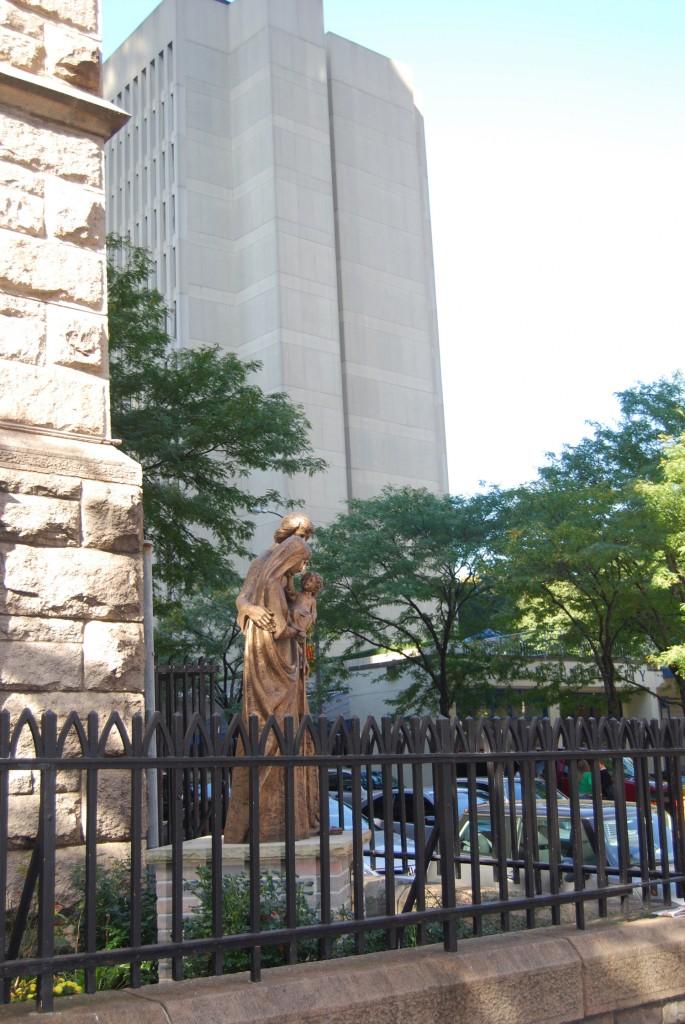How Catholic Can a University Be?
“U.S. Catholic” Categorizes Catholic Institutions
May 29, 2011
Published: November 8, 2007
FORDHAM—Determining how a Catholic university such as Fordham manifests its Catholic identity depends largely on how the university defines Catholicism. According to an article in the November issue of “U.S. Catholic,” the ways in which many different Catholic colleges and universities demonstrate their faith depend on many factors, from the number of Catholic professors to the importance of academic freedom.

The Rev. Robert R. Grimes, S.J., dean of Fordham College at Lincoln Center (FCLC) echoed these thoughts. “People have very different notions of what Catholic means. Some of the fiercest critics of Catholic institutions have some of the narrowest understandings of what Catholic is,” he said.
“U.S. Catholic” grouped Catholic institutions into four categories: immersion colleges, which serve only Catholic students and are located outside urban areas, such as Southern Catholic College in Georgia; persuasion schools, which encourage participation in Catholic services, rather than expect it, such as Villanova University in Pennsylvania; diaspora universities, which are often located in inner cities or in predominantly Catholic regions, but Catholic students are often a minority, such as DePaul University in Chicago; and cohort universities, which attract academically distinguished students who are expected to exercise considerable social influence in promoting Catholic viewpoints upon graduating, such as Georgetown University in Washington, D.C.
“Fordham features elements from three of the four categories,” said James Fisher, co-director of the Curran Center for American Catholic Studies, who excluded the immersion category. “That alone is a positive thing. It suggests that we handle diversity and variety,” he added. Even the “subtle distinctions” between the Rose Hill campus and the Lincoln Center campus are “signs of very healthy Catholic variety since they are animated by the same Ignatian principles, which is evident in slightly different fashions on the two campuses,” he noted.
Peggy Steinfels, co-director of the Fordham Center on Religion and Culture said that the difference in the two campuses at Fordham makes it difficult for Fordham to fall under one category, thus making it difficult to pinpoint which model represents the university. “As an urban campus with many divisions, even at the undergrad level, Fordham doesn’t fit easily anywhere—so I think I’ll say none of the above,” she said.
The article mentioned that critics of modern Catholic institutions are urging Catholic families to walk away from Catholic institutions that “serve significant numbers of non-Catholics” or have a “notable presence of secular speakers.”
Fisher disagreed with this idea, saying that it is not Catholic. “Catholicism is never a separatist tradition,” he said. “By virtue, that violates the spirit of Catholicism.”
Though the article mentioned that some Catholic universities actively seek a Catholic faculty, Fordham is not one of those schools. “We don’t even ask if [a faculty applicant] is Catholic or not,” Grimes stated. “It never occurred to me to ask someone about their religious beliefs in an interview or [during] employment.”
Grimes noted that more important than an applicant’s religious beliefs is their confidence in the mission of the institution, and that he or she will contribute to the mission.
Hillary Reeves, FCLC ’11, said that diversity in religion among students and faculty is positive. “I think it is a good thing, because I think otherwise it might make people feel like [Fordham] is imposing their Catholic beliefs,” she said. “Part of all faiths is about accepting people and preaching the word of your religion, without forcing it on other people.”
Steinfels said that a Catholic university that adapts to the secular world does not make it any “less Catholic,” as some critics said in the article in “U.S. Catholic.” Steinfels added, “An authentic [Catholic institution] has a special responsibility to help students learn critically about their own religious tradition.”
Steinfels also noted that Catholic universities today are not what they once were. “The world changes, and I think it is probably a good thing that Catholic schools have welcomed non-Catholic students,” she said. “The university should welcome people of many different views on many different questions.”
According to Grimes, there was a shift in the notion of Catholic higher education in 1967, when the Land O’Lakes Statement: The Nature of the Contemporary Catholic University, was issued. The statement demanded that institutions of Catholic higher education professionalize and focus on the issues of academic freedom.
Some students felt that the change in times, and the increased focus on academics has made the Catholic institution lose some of its Catholicism. “We are no longer a seminary, theological school or your local parish school, but we have much greater roots in academic pursuits,” Jack McLaughlin, FCLC ’08, said. “It’s not a bad thing that we aren’t as Catholic anymore, but it’s the truth.”












